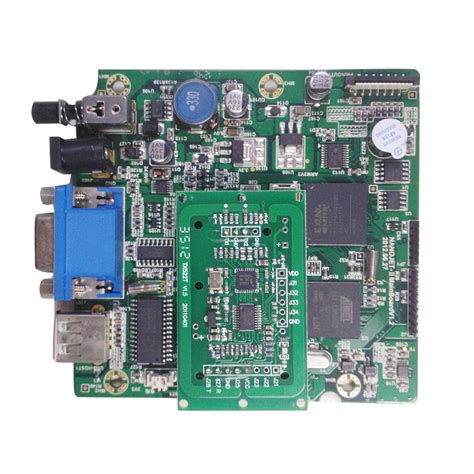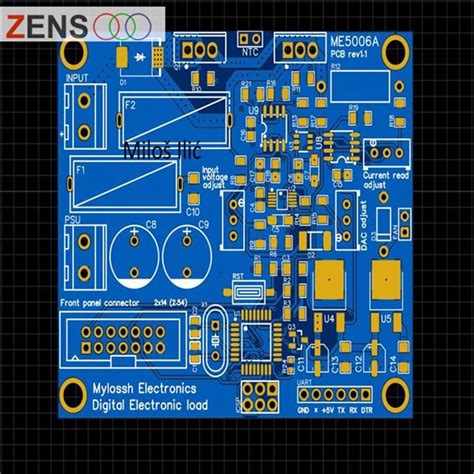PCB to PCBA: Integrated Manufacturing Lifecycle Essentials

Key Takeaways
Transitioning from PCB design to functional PCBA units demands meticulous integration of design, manufacturing, and testing phases. A streamlined PCB assembly workflow hinges on Design for Manufacturing (DFM) principles, which minimize errors and reduce rework by aligning design specifications with production capabilities. Implementing automated assembly processes, such as surface-mount technology (SMT) and precision pick-and-place systems, ensures consistency while scaling production.
Critical quality assurance protocols include:
| Stage | Key Metrics | Tools/Techniques |
|---|---|---|
| PCB Fabrication | Layer alignment, impedance | Automated optical inspection |
| PCBA Testing | Functional validation | In-circuit testing (ICT), AOI |
End-to-end quality control strategies integrate real-time monitoring and statistical process control (SPC) to identify deviations early. Cross-functional collaboration between design engineers and PCBA manufacturers is vital to address bottlenecks, such as component sourcing or thermal management challenges. Cost optimization emerges through standardized workflows, reduced material waste, and predictive maintenance of assembly equipment. By harmonizing these elements, manufacturers achieve shorter lead times, higher yield rates, and robust PCB-to-PCBA lifecycle management.

PCB to PCBA Workflow Optimization
Optimizing the transition from PCB assembly to PCBA requires harmonizing design, fabrication, and testing phases into a unified workflow. A critical first step involves implementing design for manufacturability (DFM) checks to eliminate errors that could delay production. By integrating automated pick-and-place systems and reflow soldering technologies, manufacturers reduce human intervention, ensuring consistent precision during PCB assembly. Advanced optical inspection (AOI) and in-circuit testing (ICT) further validate component placement and electrical functionality, minimizing post-production defects.
To enhance reliability, thermal and power integrity analyses—such as power factor calculations—should be embedded early in the PCBA process. Real-time data sharing between engineering and production teams accelerates issue resolution, while predictive maintenance of assembly equipment reduces unplanned downtime. Prioritizing traceability through barcode or RFID tracking ensures accountability across the supply chain, streamlining compliance with industry standards. By aligning these strategies, manufacturers achieve a seamless workflow that balances speed, cost-efficiency, and quality in end-to-end PCB to PCBA production.
Design for Manufacturing Best Practices
Implementing Design for Manufacturing (DFM) principles early in the PCB assembly process ensures seamless translation from design to functional PCBA. Key considerations include optimizing component placement for automated pick-and-place systems, maintaining adequate clearance between traces to prevent short circuits, and selecting materials compatible with reflow soldering temperatures.
Tip: Collaborate with your PCBA partner during the design phase to identify potential manufacturability issues, such as improper pad sizes or insufficient solder mask coverage.
Critical DFM checks involve verifying PCB assembly tolerances, such as hole-to-pad ratios and solder paste stencil apertures. For instance, mismatched footprints for surface-mount devices (SMDs) can lead to tombstoning or misalignment during reflow. Tools like automated DFM analysis software streamline error detection, reducing costly redesigns.
Emphasize thermal management by balancing copper distribution and avoiding concentrated heat zones, which can warp boards during soldering. Additionally, standardizing component orientations across the PCBA simplifies assembly workflows and minimizes human error.
Transitioning to production-ready designs requires aligning with PCB assembly capabilities, such as panelization preferences or testing access points. By integrating DFM guidelines, engineers bridge the gap between theoretical schematics and scalable manufacturing—a cornerstone of efficient PCBA lifecycle management.
Automated Assembly Process Innovations
Modern PCB assembly workflows now leverage intelligent automation to bridge the gap between design and functional PCBA units. Advanced pick-and-place systems, powered by machine vision, achieve micron-level precision in component placement, reducing errors by up to 98% compared to manual methods. These systems integrate real-time feedback loops with design-for-assembly (DFA) software, automatically adjusting parameters like solder paste volume or thermal profiles to match evolving PCBA requirements.
Modular production lines further enhance flexibility, enabling seamless transitions between low-mix/high-volume and high-mix/low-volume batches. For instance, dual-track conveyors paired with AI-driven scheduling algorithms minimize downtime during product changeovers. Closed-loop inspection systems, such as 3D automated optical inspection (AOI), now perform in-process validation at critical stages, flagging defects before they cascade downstream.
The adoption of IoT-enabled machinery creates a digital thread across PCB assembly phases, allowing traceability from bare boards to tested PCBA units. This connectivity supports predictive maintenance models, cutting unplanned stoppages by 40% in field-tested implementations. As Industry 4.0 principles permeate manufacturing floors, these innovations collectively drive toward zero-defect manufacturing benchmarks while maintaining cost efficiency.
Testing Protocols for Quality Assurance
Effective PCB assembly transitions to PCBA reliability through rigorous multistage testing protocols. At the core of quality assurance, automated optical inspection (AOI) scans for soldering defects, component misalignment, or substrate flaws, while X-ray inspection verifies hidden connections in ball grid arrays (BGAs) and multilayer boards. In-circuit testing (ICT) evaluates electrical performance against design specifications, ensuring no short circuits or open traces compromise functionality.
For high-volume PCBA production, functional testing (FCT) simulates real-world operating conditions, stress-testing power management, signal integrity, and firmware interactions. Environmental stress screening (ESS), including thermal cycling and vibration tests, identifies failure-prone units before deployment. Integrating design for testability (DFT) principles early reduces rework costs by 30–40%, aligning with end-to-end quality control strategies.
Cross-functional teams leverage statistical process control (SPC) data to refine assembly parameters, creating feedback loops that enhance yield rates. By standardizing protocols across PCB assembly stages, manufacturers achieve traceability from bare boards to validated PCBA outputs, ensuring compliance with industry certifications like IPC-A-610 and ISO 9001. This systematic approach minimizes defects while maintaining scalability in complex electronics manufacturing ecosystems.

End-to-End Quality Control Strategies
Effective quality control in PCB assembly and PCBA production requires a systematic approach that spans design validation, material inspection, and post-assembly testing. Real-time monitoring of solder paste application, component placement accuracy, and reflow profiles ensures defects are identified early, minimizing rework costs. Implementing statistical process control (SPC) tools enables manufacturers to track critical parameters like solder joint integrity and thermal performance across batches, aligning with ISO 9001 and IPC-A-610 standards.
Advanced optical inspection (AOI) systems and automated X-ray testing complement functional validation protocols to detect latent issues such as micro-cracks or insufficient via fills. For high-reliability applications, environmental stress screening (ESS) simulates operational conditions to validate PCBA durability under thermal cycling or vibration. Cross-functional collaboration between design engineers and assembly teams further strengthens defect prevention by addressing manufacturability challenges during prototyping.
A closed-loop feedback mechanism integrates test data with PCB assembly workflows, enabling continuous process optimization. By standardizing documentation and leveraging traceability systems, manufacturers ensure compliance with industry regulations while accelerating root-cause analysis for quality deviations. This holistic strategy not only reduces field failure rates but also enhances stakeholder confidence in end-to-end production outcomes.
Streamlined Production Lifecycle Solutions
Achieving seamless integration from PCB assembly to PCBA requires a holistic approach that synchronizes design, fabrication, and testing phases. By adopting unified digital platforms, manufacturers can bridge gaps between PCB design software and automated assembly lines, ensuring real-time data exchange for error reduction. For instance, integrating design-for-manufacturability (DFM) checks early in the process minimizes rework, while automated optical inspection (AOI) systems validate component placement accuracy during PCBA stages.
Advanced process controls further streamline workflows by monitoring material usage, cycle times, and defect rates. This enables proactive adjustments, such as optimizing solder paste application or recalibrating pick-and-place machines, to maintain consistency across high-volume batches. Additionally, leveraging closed-loop feedback systems between PCB assembly and final testing ensures non-conforming units are flagged before integration, reducing waste.
To sustain efficiency, manufacturers must prioritize supply chain synchronization. Just-in-time inventory management for critical components like ICs or connectors prevents bottlenecks, while vendor-managed inventory (VMI) programs enhance traceability. By aligning procurement with production schedules, companies can accelerate time-to-market without compromising PCBA reliability. Finally, cross-departmental collaboration—spanning engineering, procurement, and quality assurance—ensures alignment with evolving industry standards, from IPC-A-610 compliance to RoHS directives, cementing end-to-end manufacturing excellence.

Cross-Functional Team Collaboration Tips
Effective collaboration between cross-functional teams is critical to bridging the gap between PCB assembly and PCBA production. Design engineers, procurement specialists, and quality assurance teams must align their workflows to avoid bottlenecks in the integrated manufacturing process. For instance, early involvement of manufacturing experts during the design phase ensures DFM (Design for Manufacturing) principles are applied, reducing rework risks in later stages. Regular interdisciplinary reviews enable teams to address material compatibility issues, component placement constraints, and thermal management requirements holistically.
Leveraging shared digital platforms, such as cloud-based project management tools, fosters real-time communication and document synchronization across departments. Establishing clear escalation protocols for technical disagreements prevents delays, while standardized reporting templates maintain consistency in quality checks and process audits. When procurement coordinates with PCBA assembly teams on component lead times, it minimizes inventory shortages and optimizes production scheduling. By cultivating a culture of proactive knowledge-sharing, organizations can accelerate problem resolution and maintain seamless transitions from prototype validation to full-scale manufacturing.

Cost-Effective PCBA Production Methods
Achieving cost efficiency in PCBA production requires a strategic balance between process optimization, material selection, and technology adoption. A critical starting point is implementing Design for Manufacturing (DFM) principles during the PCB assembly phase, which minimizes redesigns and material waste by aligning design specifications with production capabilities. Leveraging automated assembly lines, such as high-speed pick-and-place machines and reflow soldering systems, reduces labor costs while ensuring consistent precision across high-volume batches.
Material procurement strategies also play a pivotal role. Sourcing components in bulk from certified suppliers or opting for alternative equivalent parts during shortages can lower expenses without compromising quality. Additionally, integrating advanced testing protocols like automated optical inspection (AOI) and in-circuit testing (ICT) early in the workflow helps identify defects before they escalate into costly rework.
Collaborating with an experienced PCBA service provider further enhances cost-effectiveness by leveraging their economies of scale, established supplier networks, and expertise in lean manufacturing. For instance, modular production setups allow flexible scaling to match demand fluctuations, avoiding overinvestment in idle capacity. By combining these methods, manufacturers can streamline PCB-to-PCBA transitions while maintaining competitive pricing and reliability.
Conclusion
The transition from PCB assembly to PCBA represents more than a manufacturing sequence—it embodies a strategic integration of design, production, and validation processes. By aligning design for manufacturing (DFM) principles with automated assembly workflows, manufacturers can mitigate risks such as component misalignment or solder defects, ensuring seamless progression from bare boards to functional assemblies. Rigorous testing protocols, including in-circuit and functional testing, act as critical checkpoints to validate performance and reliability.
A holistic approach to end-to-end quality control demands collaboration between design engineers, process specialists, and testing teams, fostering iterative improvements across the PCBA lifecycle. Leveraging advanced inspection technologies, such as automated optical inspection (AOI), further enhances defect detection rates while reducing time-to-market. For organizations seeking third-party validation, partnering with accredited providers like SGS ensures compliance with international standards, reinforcing trust in final products.
Ultimately, optimizing the PCB-to-PCBA journey hinges on balancing precision, efficiency, and scalability. By embedding quality at every stage—from schematic design to final assembly—manufacturers can deliver robust electronic solutions that meet evolving market demands while maintaining cost-effectiveness.
Frequently Asked Questions
What distinguishes PCB fabrication from PCBA processes?
PCB assembly refers to populating a bare circuit board with components, whereas fabrication involves creating the board itself. The transition from PCB to PCBA encompasses design validation, component sourcing, and automated soldering to ensure functional electronics.
How does Design for Manufacturing (DFM) improve PCBA outcomes?
DFM principles minimize errors by aligning PCB layouts with assembly capabilities. This includes optimizing pad sizes, component spacing, and material selection to prevent defects during pcb assembly, reducing rework costs.
What quality tests are critical in PCBA production?
Automated Optical Inspection (AOI) and In-Circuit Testing (ICT) verify solder integrity and electrical performance. Functional testing under real-world conditions ensures PCBA reliability, aligning with end-product requirements.
Why choose integrated PCB-to-PCBA services?
End-to-end providers synchronize design, pcb assembly, and testing phases, eliminating communication gaps. This reduces lead times by 20-35% and ensures consistent quality control across the manufacturing lifecycle.
How can cross-functional teams optimize PCBA workflows?
Regular collaboration between design engineers and pcb assembly technicians enables real-time feedback. Shared digital platforms track revisions, ensuring alignment on tolerances and thermal management requirements.
Ready to Streamline Your PCB-to-PCBA Process?
Please click here to explore professional PCB assembly solutions tailored for optimized manufacturing outcomes.







